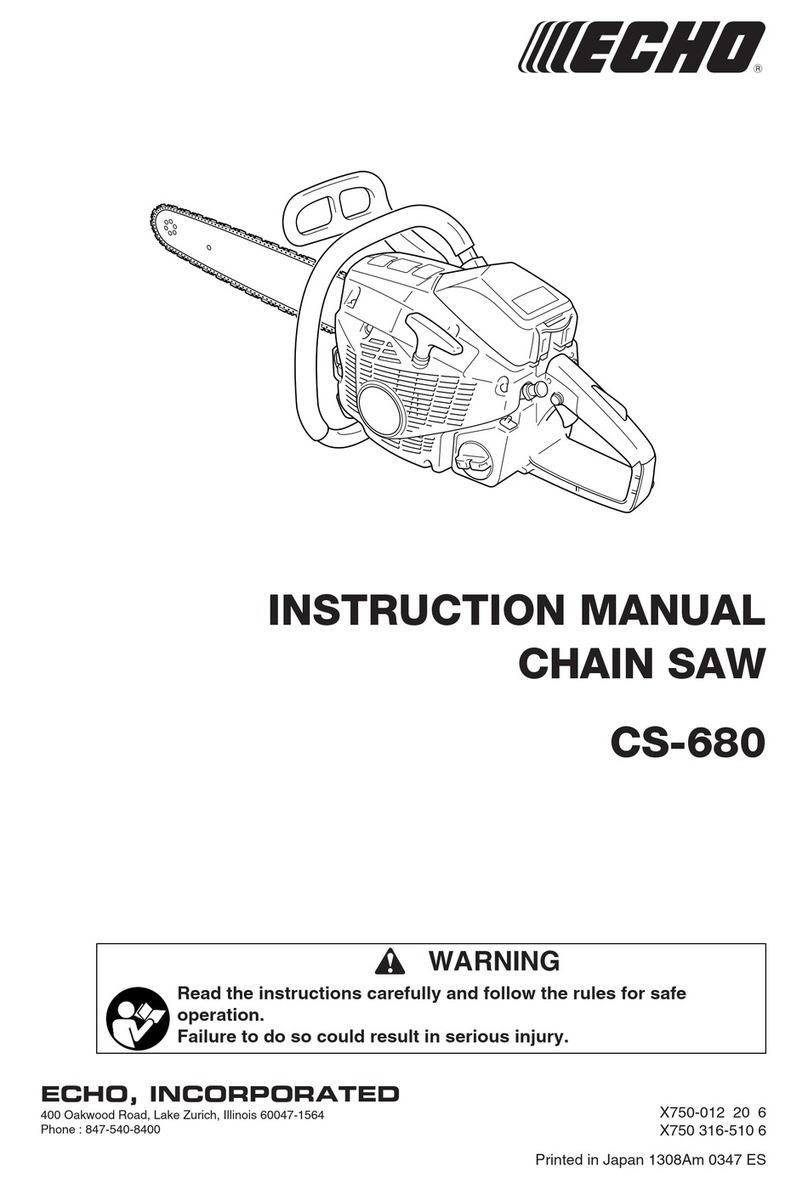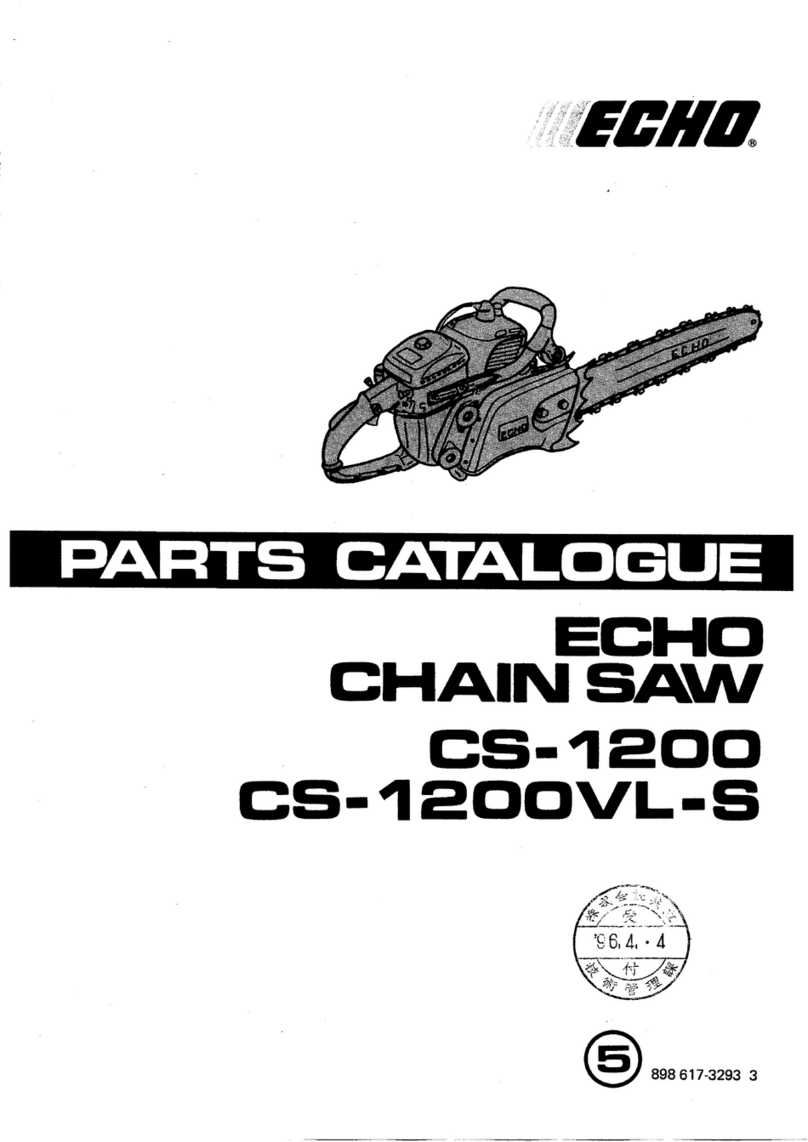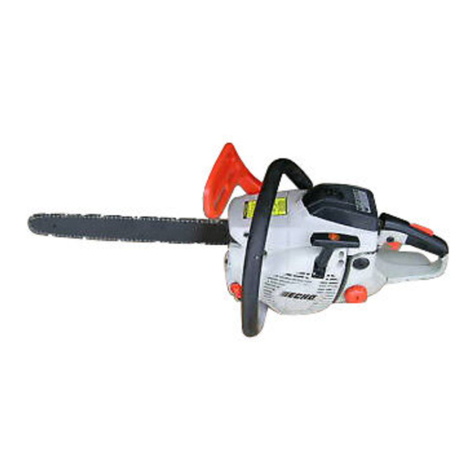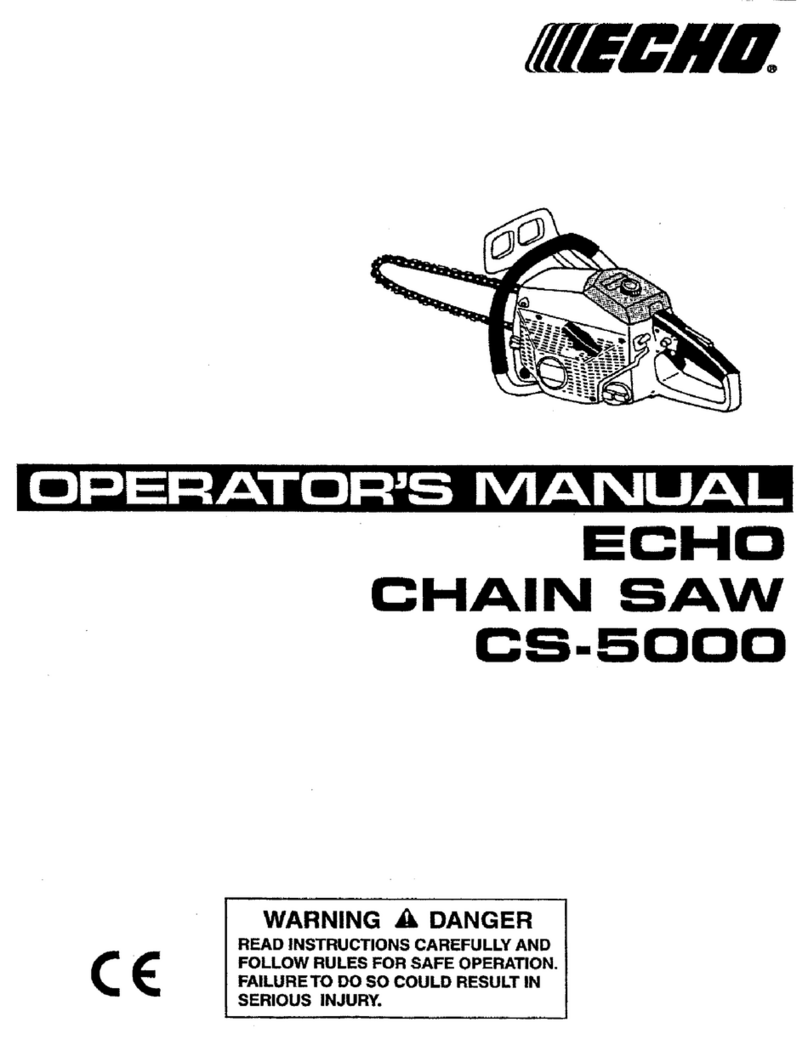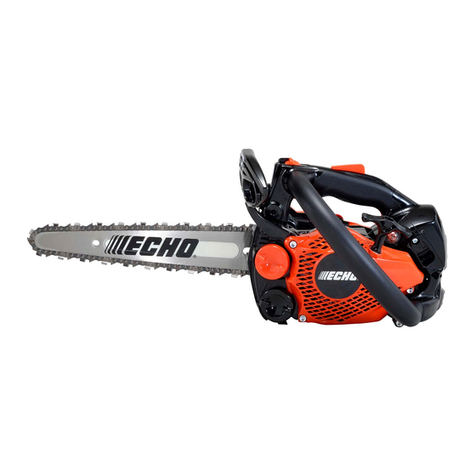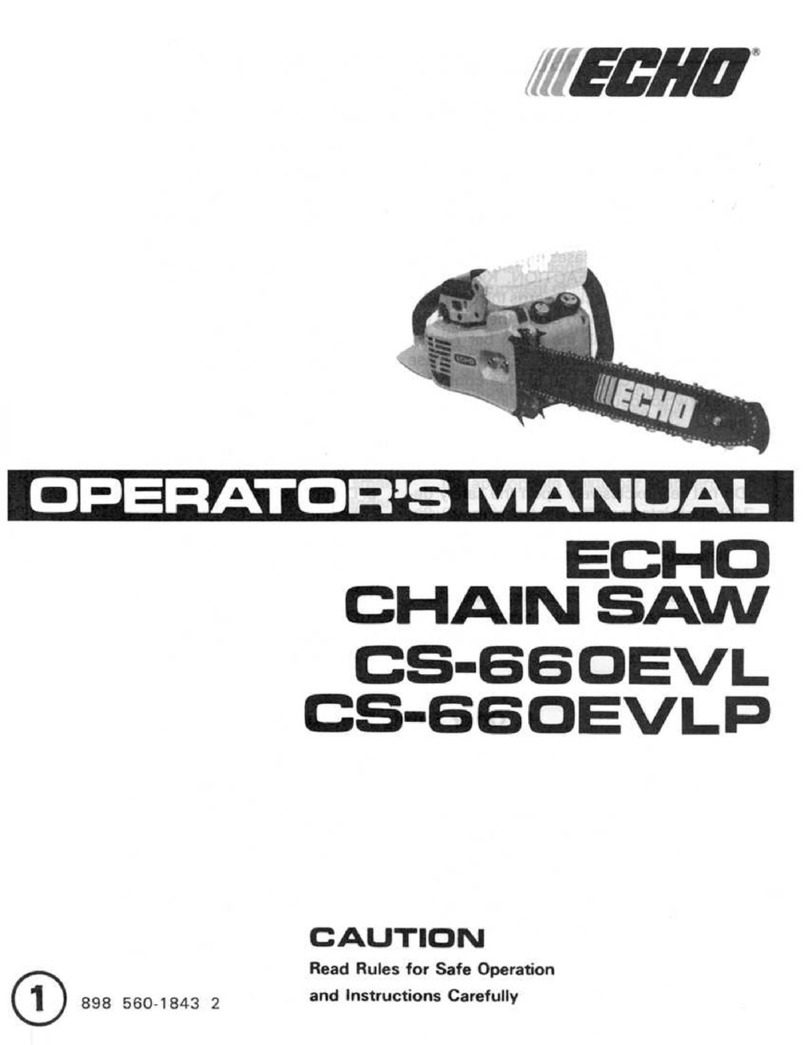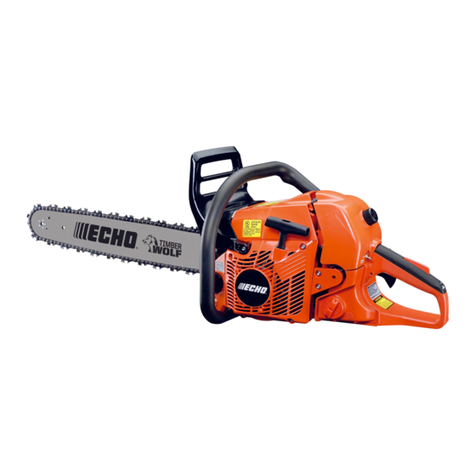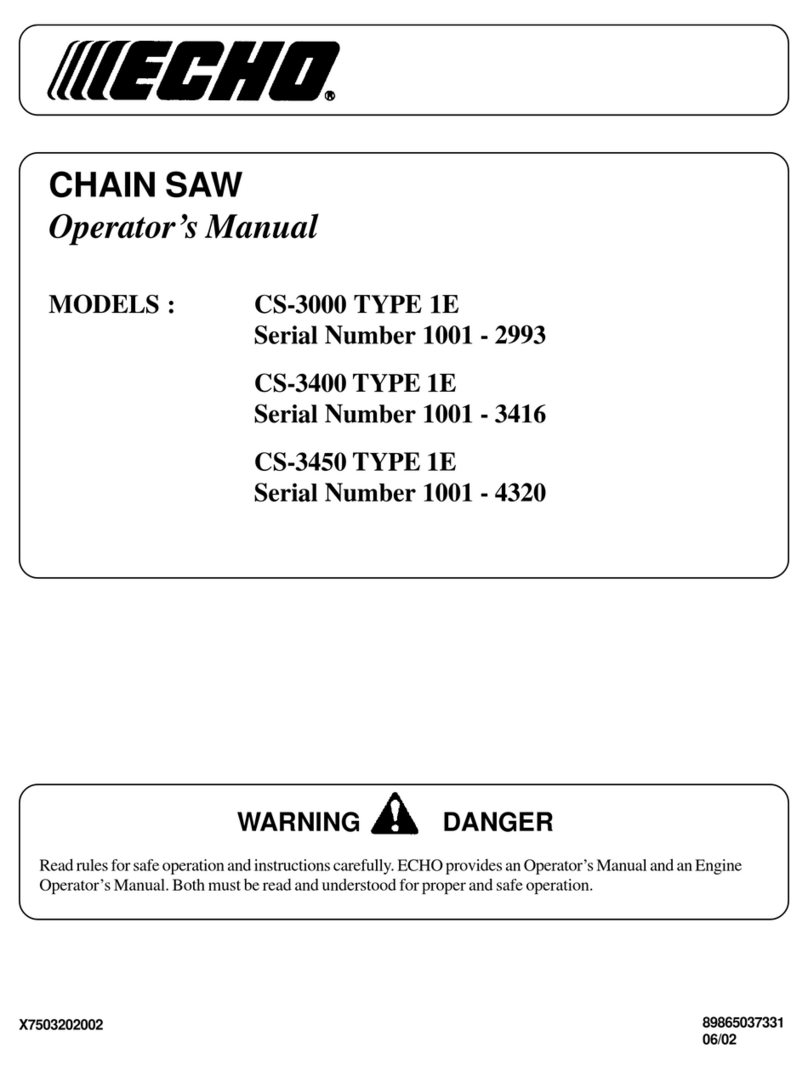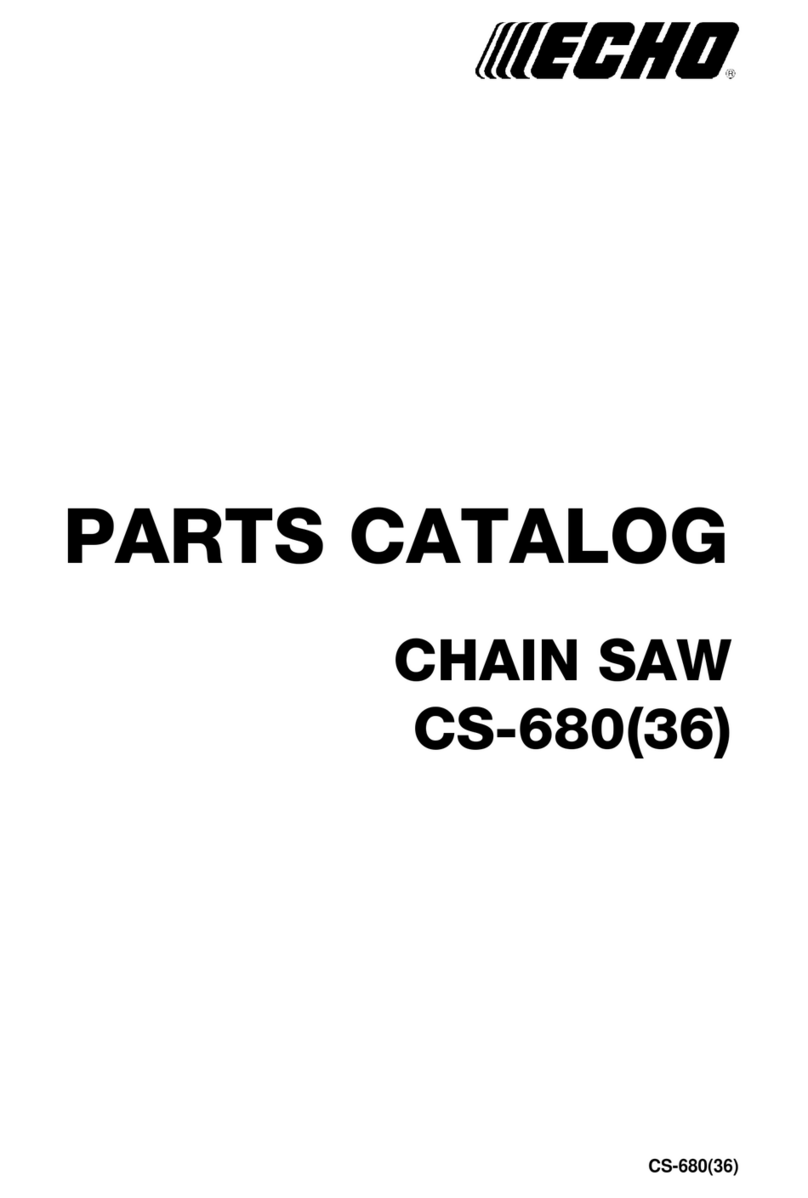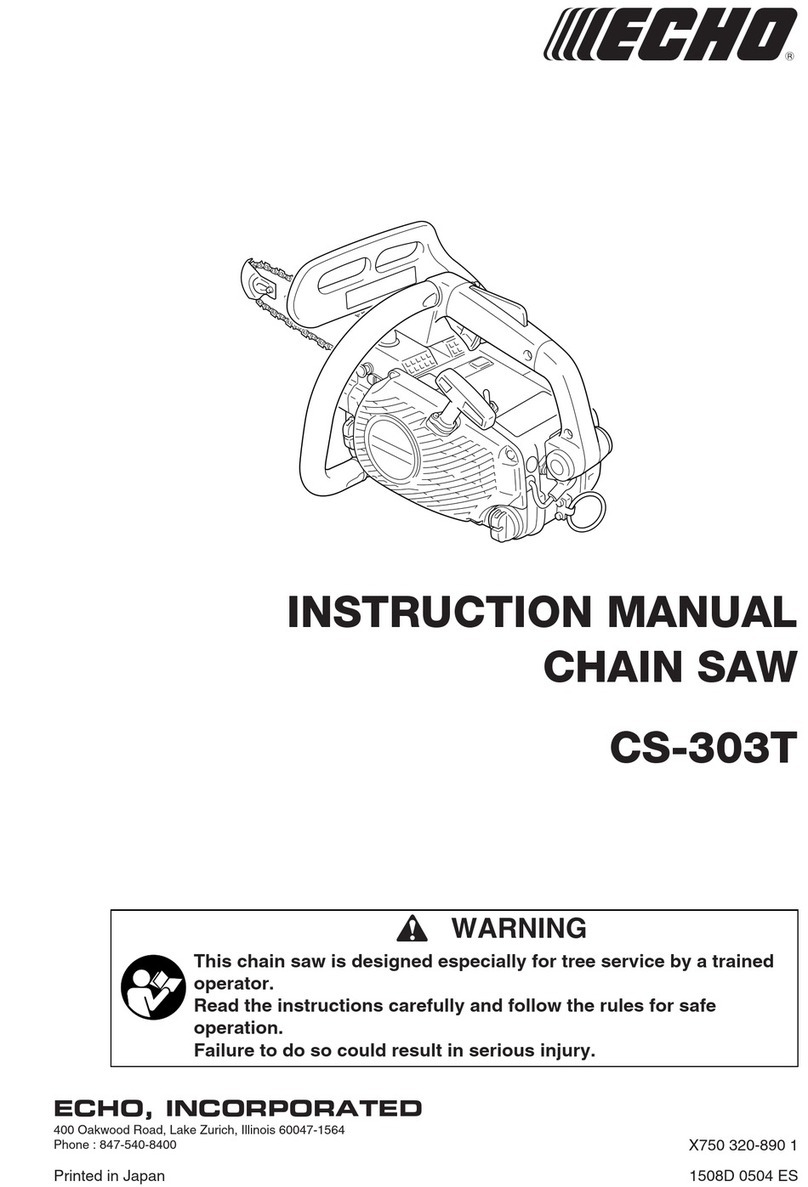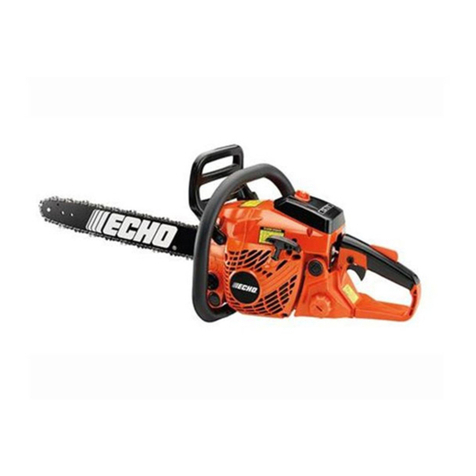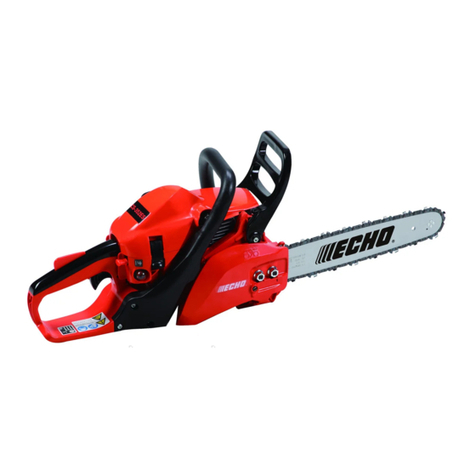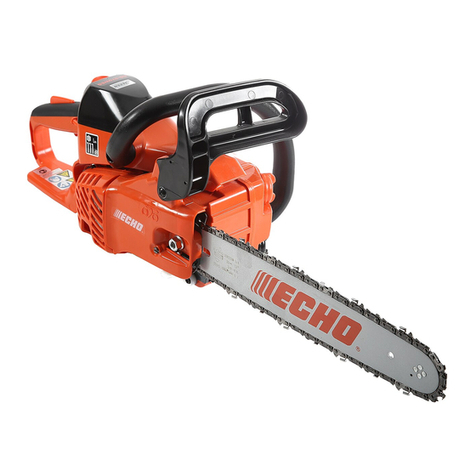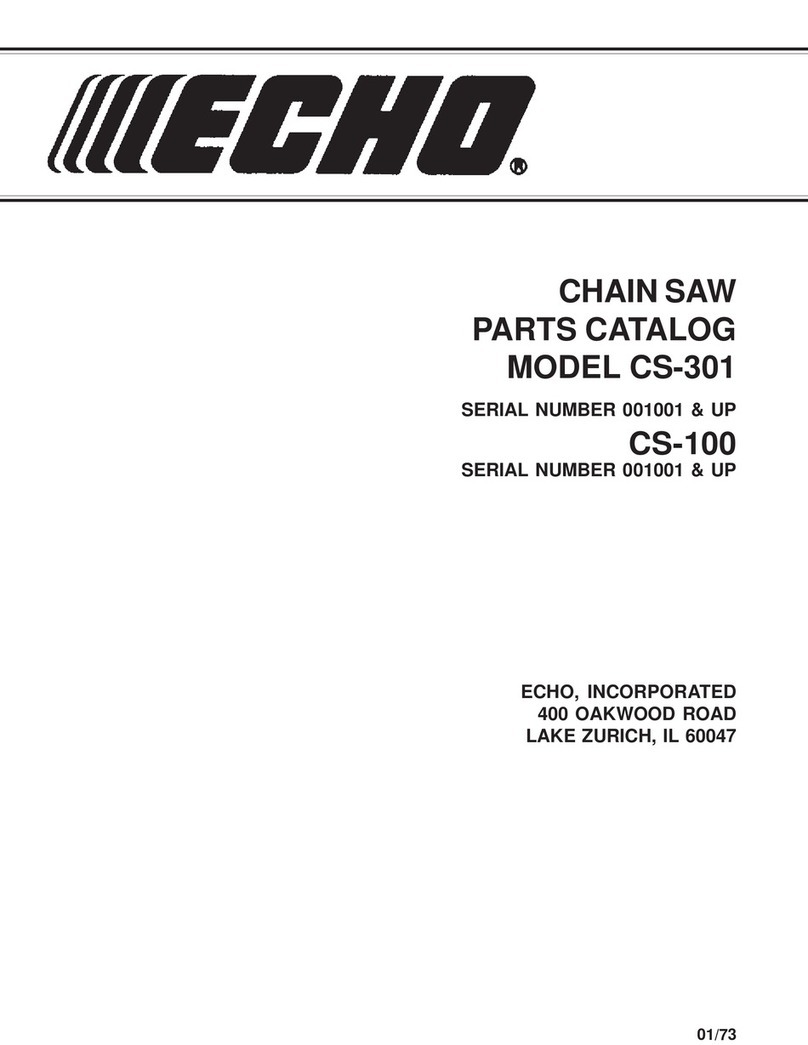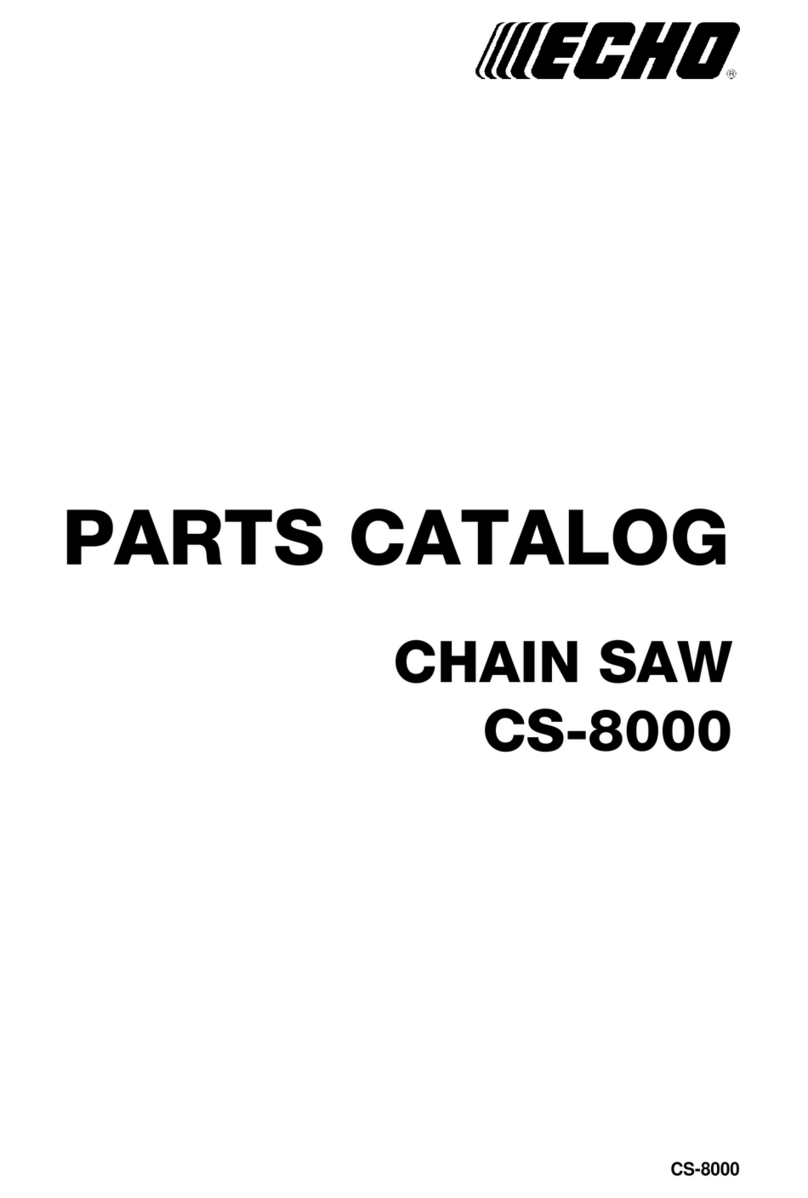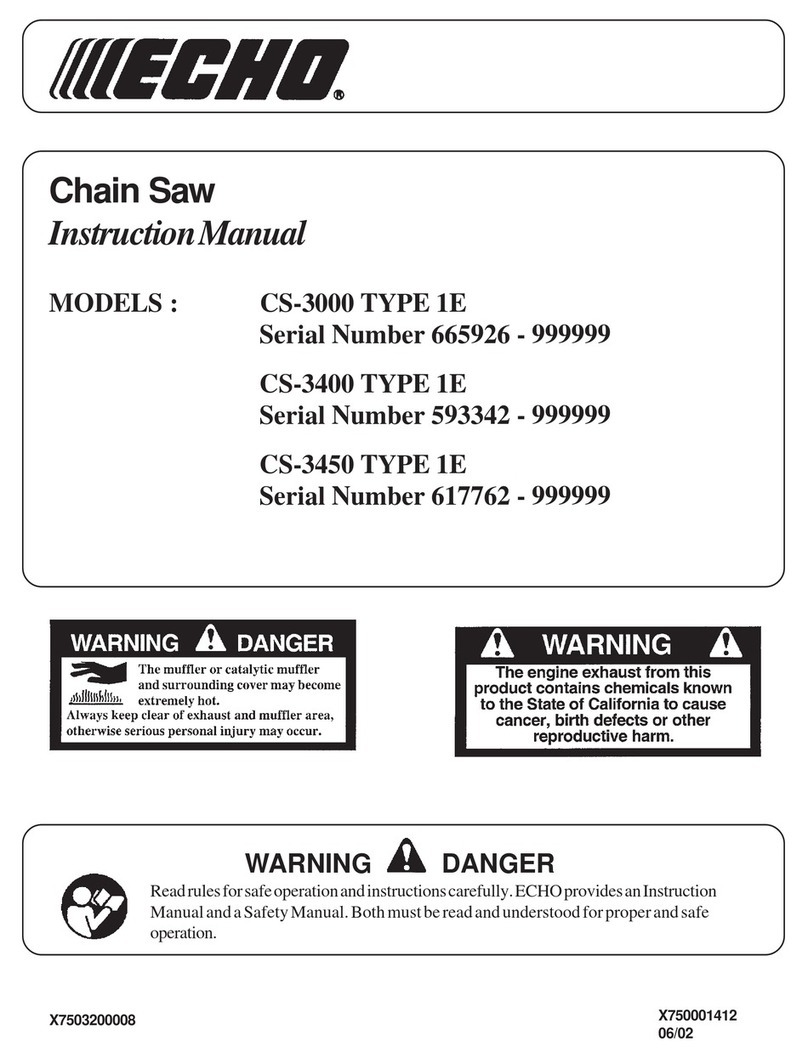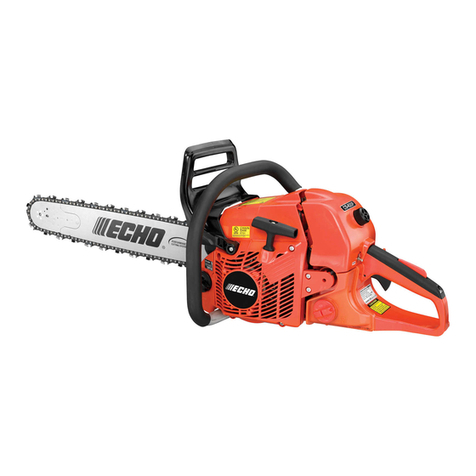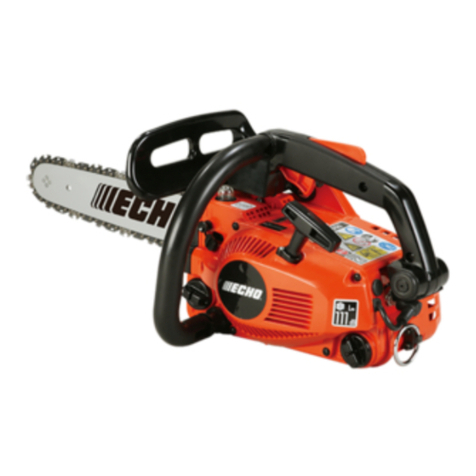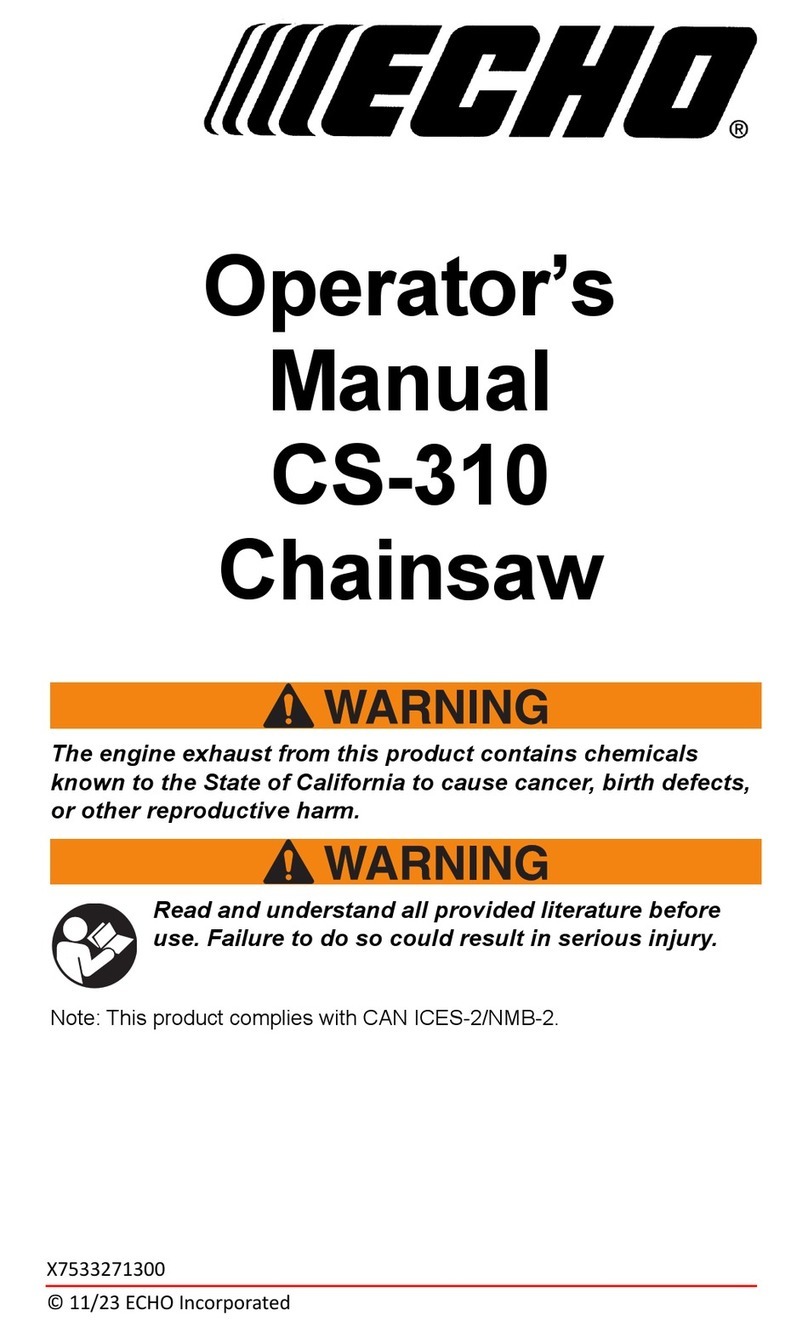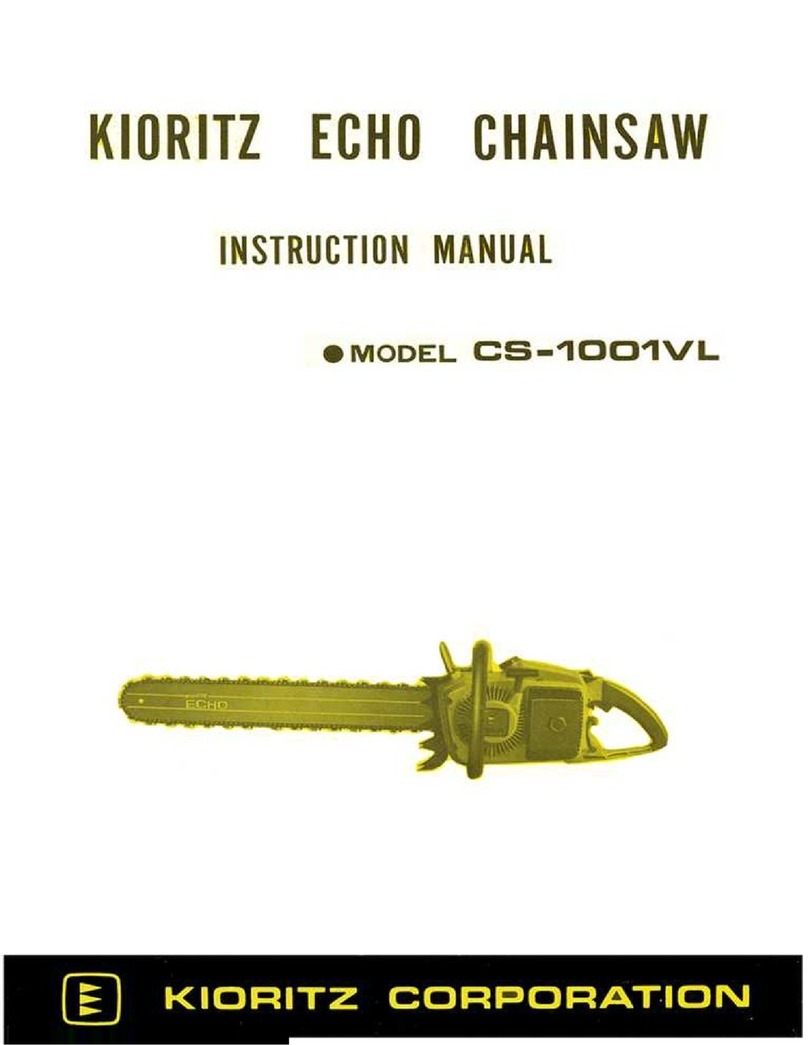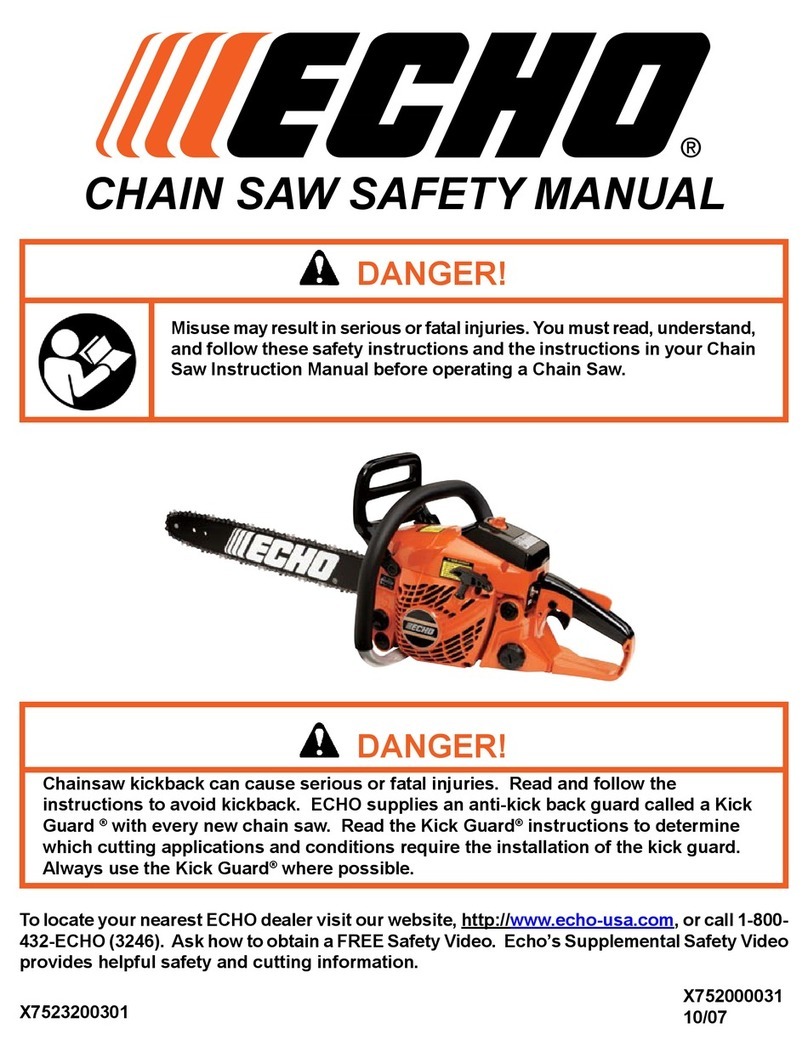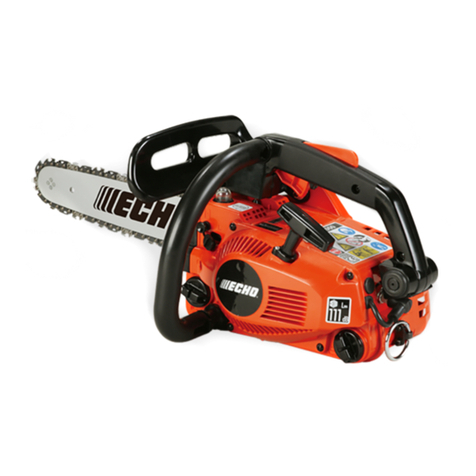
TABLE OF CONTENTS DCS-2500TN
2 X7508220500
© 7/23 ECHO Incorporated
TABLE OF CONTENTS
Introduction................................................................................................................. 3
Important information ......................................................................................... 3
Parts and Serial Number.................................................................................... 4
Service ............................................................................................................... 5
ECHO Consumer Product Support .................................................................... 5
Product Registration........................................................................................... 5
Additional Literature ........................................................................................... 5
Safety ......................................................................................................................... 6
For safe use of your product .............................................................................. 6
International Symbols......................................................................................... 7
Handling the Product ......................................................................................... 8
Chainsaw Safety Warnings .............................................................................. 15
Causes and Operator Prevention of Kickback ................................................. 16
Kickback Safety Precautions............................................................................ 17
General Precautions ....................................................................................... 18
Precautions for Use ......................................................................................... 19
Protective Gear ............................................................................................... 25
Description ............................................................................................................... 27
Contents................................................................................................................... 28
Assembly.................................................................................................................. 29
Assembly.......................................................................................................... 29
Temperature Information .................................................................................. 32
Battery Charging .............................................................................................. 32
Operation.................................................................................................................. 37
Starting the Unit ............................................................................................... 37
Stopping the Unit.............................................................................................. 38
Before Use ....................................................................................................... 39
Correct Use of Chain Brake ............................................................................. 40
Tree Service Chainsaw .................................................................................... 42
General Cutting Instructions - Ground Usage .................................................. 45
Maintenance............................................................................................................. 50
Skill Levels ....................................................................................................... 51
Servicing Guidelines ........................................................................................ 51
Saw Chain Maintenance ................................................................................. 52
Maintenance and Care..................................................................................... 54
Replacement Guide Bar and Chain ................................................................. 58
Troubleshooting........................................................................................................ 59
Storage..................................................................................................................... 60
Storage ............................................................................................................ 60
Disposal ........................................................................................................... 61
Specifications ........................................................................................................... 62
Product Registration................................................................................................. 63
Warranty................................................................................................................... 65
Notes.........................................................................................................................66
